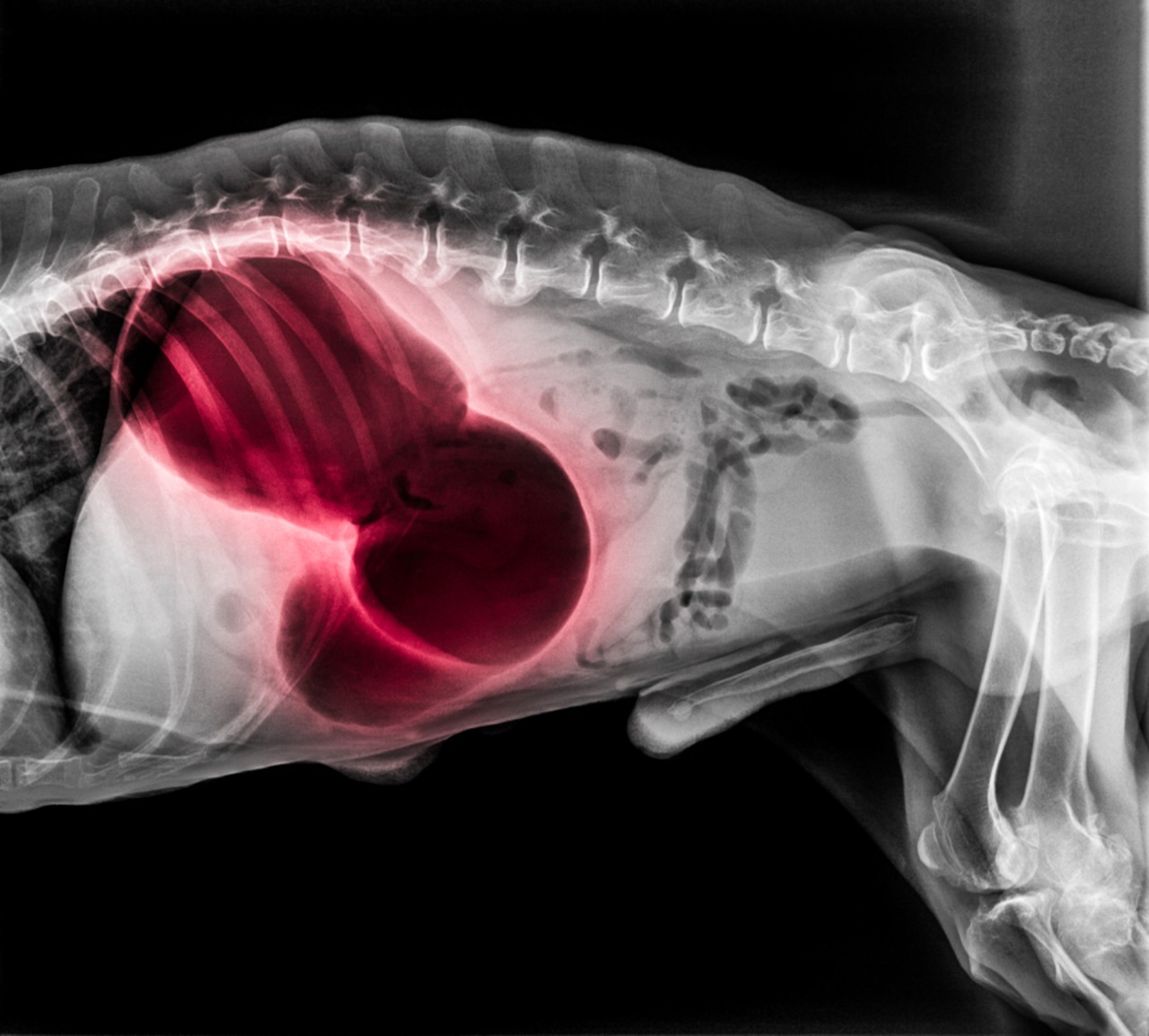Bloat is a life-threatening and extremely painful medical emergency in dogs, but it is thankfully rare. It’s important to know the symptoms of the condition, which occurs when the gut fills with gas and twists, as it can kill a dog quickly if not treated immediately.
What is Bloat?
Bloat is also called gastric dilatation-volvulus and occurs when the digestive system fills with gas and twists. No-one knows if the gas causes the twists, or the gut twists and then fills with gas. Either way it is an extremely painful condition which can cut off the blood supply to the gut causing damage, stop gas and food passing through the gut, cause the spleen to twist and lose blood supply, and can block vital veins taking blood back to the heart. The gas filled gut also puts pressure on the diaphragm, making breathing difficult.
The condition can cause the suffering dog to go into shock and can be fatal within a few hours if not treated immediately, so it’s important to know the signs and what to do.
What are the symptoms of Bloat in dogs?
This painful gastric condition causes great pain, a swollen, hard belly, retching, drooling, a painful abdomen, restlessness and signs of distress. A dog with bloat will pant, may try to be sick but nothing will happen, will walk around and be in obvious distress. Some may make sounds to let you know they’re in pain. If you think your dog might have bloat take them to your vet immediately as this condition is an emergency and every minute counts. There’s nothing you can do at home to help the condition.

What causes Bloat?
It’s not really known what causes Bloat. It is thought that owners can reduce the chances of their dog developing the condition by feeding smaller meals more often, avoiding feeding fatty food and kibble and avoiding feeding their dog just before or after strenuous exercise. There is some thought giving iced water can cause muscle spams in the gut but making sure your dog always has access to room temperature water is important.
It is also thought that gobbling food could cause Bloat so if your dog eats quickly you could try a bowl that is designed to force the dog to eat slowly. These bowls have shapes moulded into them with nooks and crannies the food gets stuck behind so it’s difficult to eat in just a few mouthfuls. You could also try to reduce stress or excitement around mealtimes.
Over-weight dogs and underweight dogs can be susceptible, so maintaining a healthy weight is important, too.
Large dogs such as Great Danes, St Bernards, Weimaraners, German Shepherds and Labradors are more prone to developing this condition but it has been reported in every breed. It’s more common in male dogs than female, and in middle aged animals, but it’s important for all dog owners to know the signs and what they mean for their dog.
How is Bloat in dogs treated?
If you think your dog has bloat, rush them to the vets immediately. It can’t wait until morning.
The vet will take a history, x-ray and probably do blood tests but the only treatment is surgery. The vet will need to un-twist the gut and staple it to the body wall to prevent it twisting again. Sadly, up to a third of all dogs with Bloat die, and the longer they are left bloated the worse their chances are.
A dog’s recovery after surgery will need to be monitored carefully. Whilst Bloat is a frightening condition, it is rare. To make sure you can give your dog the best chance of recovery if they are unlucky enough to develop Bloat or any other condition, consult our dog insurance comparison page and consider taking out pet insurance so you never have to make a decision about treatment for your pet based on cost.
